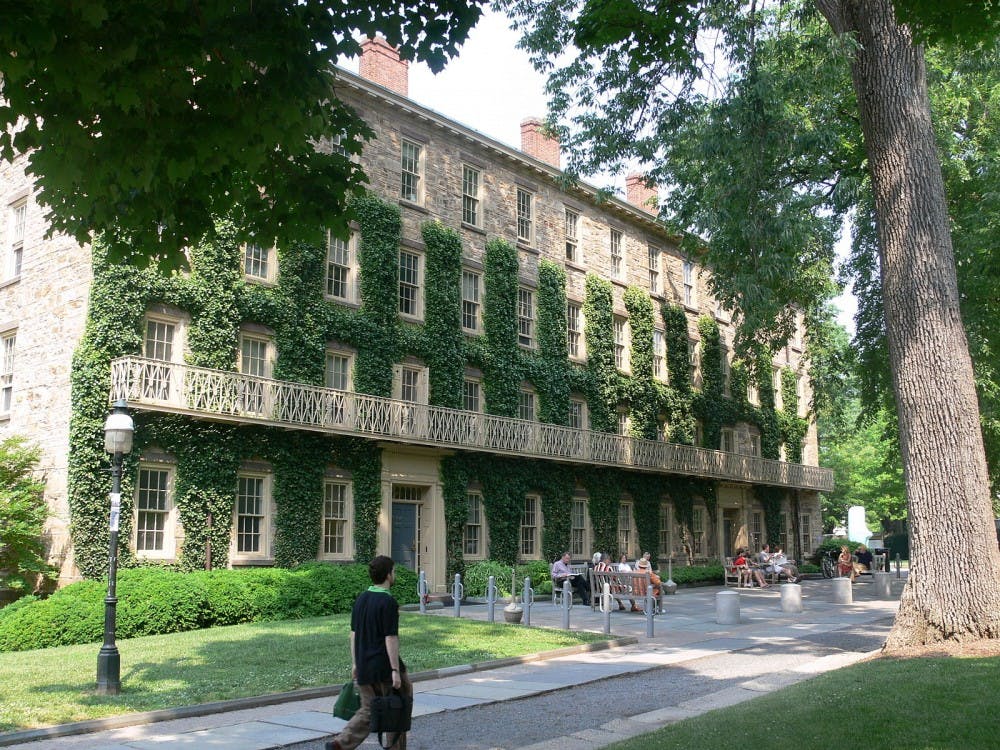The University offered admission to 6.1 percent of applicants in 2017 in its most selective round of admissions yet, according to a University press release. Out of of 31,056 applications, 1,890 students were offered admission to join the Class of 2021, and the class size is expected to fall around 1,308 students.
“The class is extraordinary and amazing in their talents,” University Dean of Admission Janet Rapelye said. “Certainly, the quality and strength of the applicant pool is as high as it’s ever been.”
According to the press release, 770 students of the 1,890 offered admission were previously offered admission in December as part of the University’s single-choice early action process. Like regular decision applicants, early action applicants have until May 1 to accept the University’s offer of admission.
“We applied the same standards in admitting each group,” Rapelye said. According to Rapelye, over 12,000 applicants had a 4.0 GPA and over 13,000 had scores of 1400 or higher on the SAT.
“We could have admitted five or six classes to Princeton from the pool,” Rapelye said, adding that the admissions committee looks at more than just grades and test scores.
“We have humanists, scientists, and students who will be contributing on the athletic field, among other things,” Rapelye said.
This is the first year that the redesigned SAT has been considered in admissions. Rapelye noted that the new SAT has been “so far helpful,” although the admissions committee will determine how it impacts the application process over the next three years.
Rapelye also said she appreciated that the SAT retained its essay component.
“This is very valuable because of the nature of the Princeton education,” she explained. Rapelye added that the admissions team occasionally downloads applicants’ SAT or ACT essays to get a better sense of their writing abilities.
50.5 percent of admitted applicants are women and 49.5 percent are men, representing a higher percentage of admitted women than in previous years. Additionally, 47.3 percent of the 24.1 percent of students who applied under the B.S.E program were women.
Nearly 20 percent of the students offered admission will be the first in their families to attend college, the largest number in recent memory.
Students were admitted from 49 states and 76 countries, with 12.1 percent of admitted students coming from countries besides the U.S. The most-represented states were New Jersey, California, New York, Texas, Pennsylvania, Florida, Massachusetts, and Georgia, in order. The only state not represented is Montana. Students were also admitted from Washington, D.C., Guam, Puerto Rico, American Samoa, and the Virgin Islands.
Of the admitted students, 63.8 percent attended public schools. The University press release also noted that over half of admitted applicants self-identify as “people of color, including biracial and multiracial students.” Additionally, nearly 11 percent of admitted students are children of University alumni.
Increased accessibility may have contributed to the increase in applicants, Rapelye noted. The virtual tour offered on the University’s web page has been translated into four languages, for example.
“This is helpful for both students and families, especially parents and grandparents,” Rapelye said.
Rapelye also highlights the University’s financial aid program in attracting applicants. The University offers grant-only financial aid packages, meaning students don’t have to pay back the aid they receive. The average grant for the class of 2020 was $48,000. Financial information on the Class of 2021 has not yet been determined.
“It is an extraordinary privilege to do this work and know that we can admit students without regard to their financial standing,” Rapelye said.
Internally, the admissions staff moved to a new reading platform called Slate, which Rapelye said has been helpful in reading the record number of applications. Since the beginning of January, admissions staff have been working six to seven days a week and eight to 10 hours a day to get through the applications.
“It’s been a very good change,” Rapelye said. “It allows the reader far greater flexibility in moving through an application.”
Although the University’s redesigned website didn’t debut until January, after applications were due, Rapelye said that the website will help students to be able to envision life at the University more clearly.
Rapelye added that the University’s plans to expand the class size in the future had no effect on this year’s decisions because the University is waiting until the seventh residential college is built to begin expanding class size.
Admitted students will have the opportunity to explore Princeton’s campus and live with current students at two Princeton Previews in April.
In addition, 1,168 candidates for admission were offered positions on the Princeton waitlist.
According to the press release, the University’s applicant pool has more than doubled in the past 14 years.





